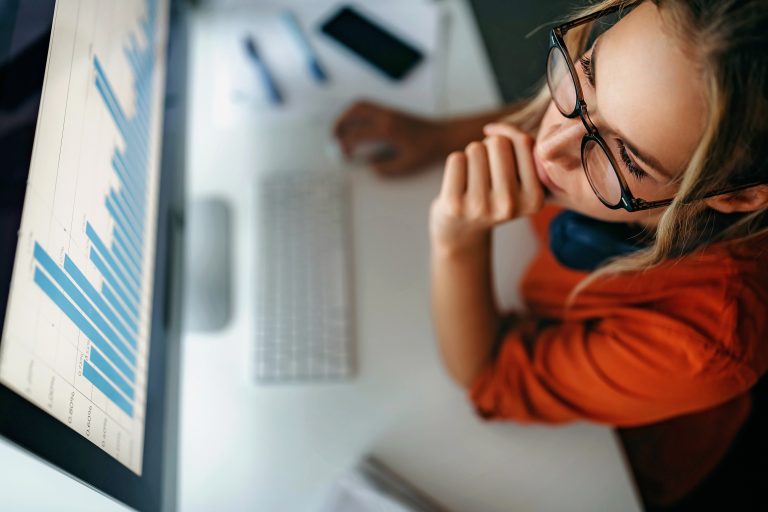FMCG, Finance and Automotive sectors are under-invested in TV
Posted on 4th July 2018 in Media Releases


Posted on 4th July 2018 in Media Releases
New findings from a $1 million study by leading independent marketing analytics consultancy Ebiquity find that companies in the Fast-Moving Consumer Goods (FMCG), Automotive and Finance sectors would significantly improve their return on advertising investment by moving more of their media budgets to TV.
Ebiquity, which was commissioned by ThinkTV, was given three years’ worth of raw sales and campaign data by 21 advertisers with a collective spend of over $500 million and used econonometric modelling* to discover which media had generated the best return on investment. Ebiquity has now used those findings to model how participants can optimise their returns by altering their media mix**.
In these latest findings, Ebiquity’s clear advice for companies in three of the four categories studied is to increase the average percentage of their media budgets allocated to TV significantly: from 78% to 90% for FMCG, from 53% to 75% for Automotive, and from 33% to 60% for Finance. It noted Search as the dominant platform for E-Commerce with TV playing a supporting role.
Ebiquity also found that if every advertiser in the four categories in the Australian market applied Ebiquity’s recommended changes, they would collectively gain $1.1 billion in sales revenue. That’s a 20% improvement for those sectors without spending a single cent more on advertising.
Richard Basil-Jones, managing director of independent marketing and media consultancy Ebiquity Asia-Pacific, said: “There have been various studies done around the world, by Ebiquity and others, on ROI by media channel, and what is clear is that TV is at the top”.
Kim Portrate, chief executive of ThinkTV, said: “The true measure of marketing success is the revenue generated from marketing investment. After we got such striking results from the ROI study, many participants asked how they could use the findings to better their return on investment. The findings here show that many companies are under-invested in today’s multi-platform TV, which is 100% viewable, brand safe, measurable and reliable.
“The study shows that small changes to the media channels used by advertisers can generate significant extra revenue dollars – in some cases it can be the difference between growing or standing still from a sales perspective. The work from Ebiquity’s latest modelling gives advertisers a clear blueprint about how to achieve greater growth without needing additional funding to drive their marketing.”
Steve Weaver, Director of Research and Insights for ThinkTV, said: “The econometric modelling methodology used by Ebiquity in the Payback Study is gold standard and the results are reliable. In today’s competitive, low-growth business environment I doubt there is a single advertiser out there who wouldn’t grab at the chance of a few extra percentage points of growth. The smart money is moving to TV.”
* Payback Australia Methodology: With permission to access three years’ worth of raw data by 21 advertisers with a collective spend of over $500 million in 2016, Ebiquity built econometric models to estimate the average sales return from media investments. Econometric modelling estimates the relationship between sales and the factors that drive sales. Econometrics uses mathematical equations to isolate and quantify all the different factors that can influence sales at any one time. For example, if an automotive advertiser runs an advertising campaign and sees a big increase in sales, that increase may also have been influenced by dealer promotions. Without stripping out the impact of promotions, one would over–estimate the impact of advertising. Using econometrics alleviates the risk of such errors, allowing one to accurately estimate the direct dollar impact that advertising has had on sales.
** Optimisation Methodology: Using the category results presented in the Payback Australia study in September 2017, Ebiquity was asked to optimise the underlying media mix for each category. Using diminishing returns curves established from econometric modelling, it applied a “hill–climbing” algorithm to optimise budget allocation. Optimisation is an iterative process that assesses what the highest return will be for the next dollar invested. It starts by fixing TV allocation at 10% and running the optimisation across the remaining media channels. This told Ebiquity what the overall media ROI is for that allocation. It then increases TV’s allocation to 20%, runs the optimisation again and records the overall media ROI. After doing this in 10% increments up to 100%, it indexes results to the maximum overall media ROI. Graphing these bars illustrates what level of TV allocation is required to optimise the revenue generated by the same overall media budget.

News / Media Releases / 13th Aug 2024
Total TV revenue decreased 8.1 per cent for the 12 months to June 2024, while Broadcaster Video on Demand is up 12.7 per cent. ThinkTV has announced the Total TV

News / Media Releases / 9th Feb 2024
Total TV revenue decreases 10 per cent for the 12 months to December 2023 while Broadcaster Video on Demand is up 10 per cent. ThinkTV has announced the total TV

News / Media Releases / 14th Aug 2023
Revenue for the 12 months to June 2023 hits $3.6 billion and BVOD growth continues to accelerate – up 6.1 per cent. ThinkTV has today announced the TV advertising revenue

News / Media Releases / 6th Feb 2023
Total TV revenue increases by 1 per cent for the 12 months to December 2022 while BVOD growth continues to accelerate – up 23 per cent. ThinkTV has today announced

News / Media Releases / 8th Aug 2022
Total TV revenue increases 11 per cent for the 12 months to June 2022 while BVOD growth continues to accelerate – up 53 per cent. ThinkTV has today announced the

News / Media Releases / 23rd Mar 2022
The Media Engine empowers marketers to create better briefs by outlining the optimal media splits to generate revenue. In an Australian first, ThinkTV has launched the Media Engine, a planning

News / Media Releases / 7th Feb 2022
Total TV revenue increases 20 per cent for the 12 months to December 2021 while BVOD growth continues to accelerate – up 68 per cent. ThinkTV has today announced the

News / Media Releases / 27th Sep 2021
A powerful new public service campaign that heroes the country’s ingenuity, inventiveness and resilience to overcoming challenges is being released nationally in a bid to boost Australia’s double vaccination rate

News / Media Releases / 16th Aug 2021
Total TV revenue is up 12 per cent for the 12 months while BVOD surges ahead by 63 per cent. ThinkTV has today announced the total TV advertising revenue figures

News / Media Releases / 19th Jul 2021
Edition Five of The Payback Series shows how to maximise return on investment by choosing channels with the ability to deliver positive ROI as well as short and long-term sales.